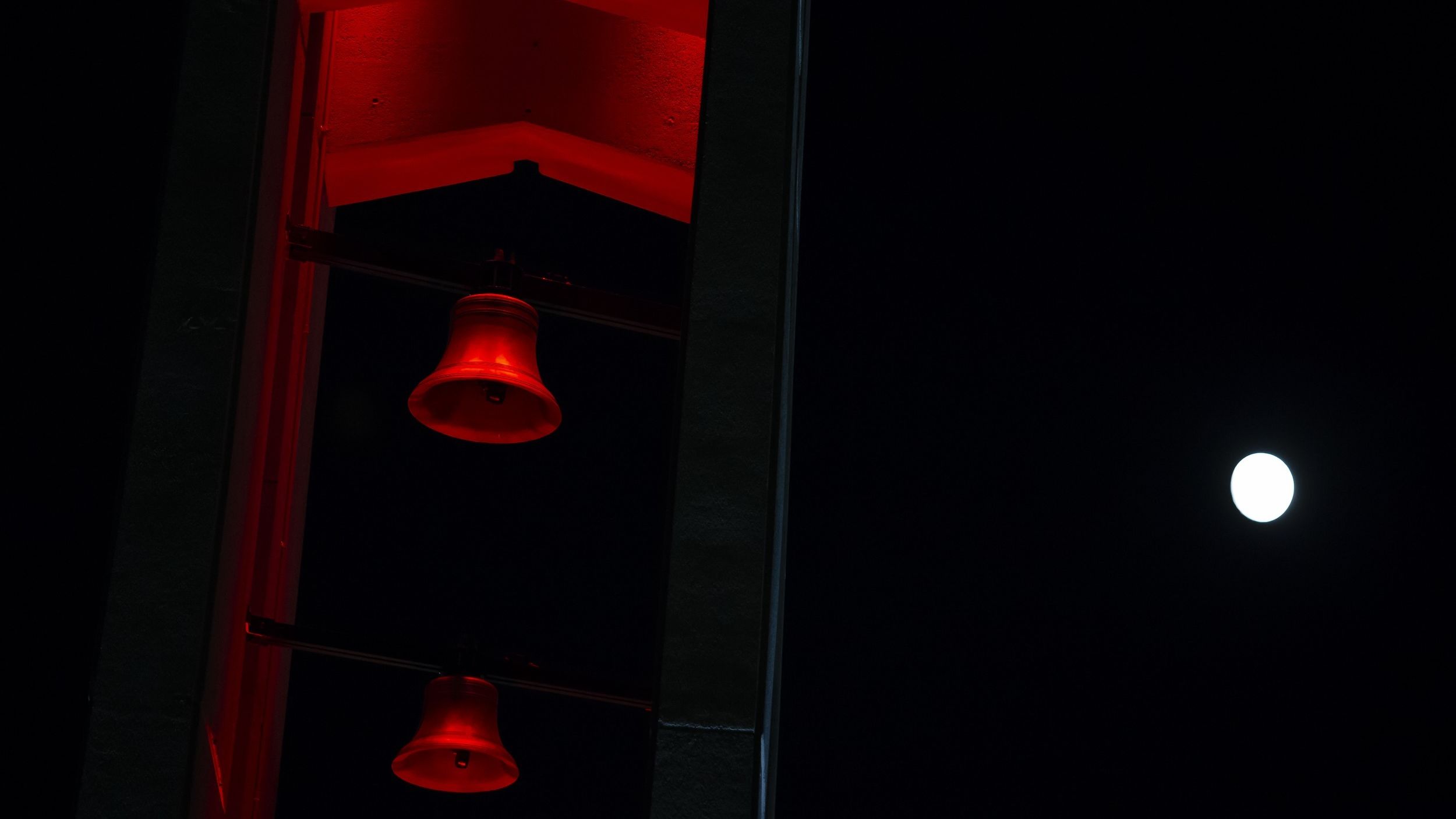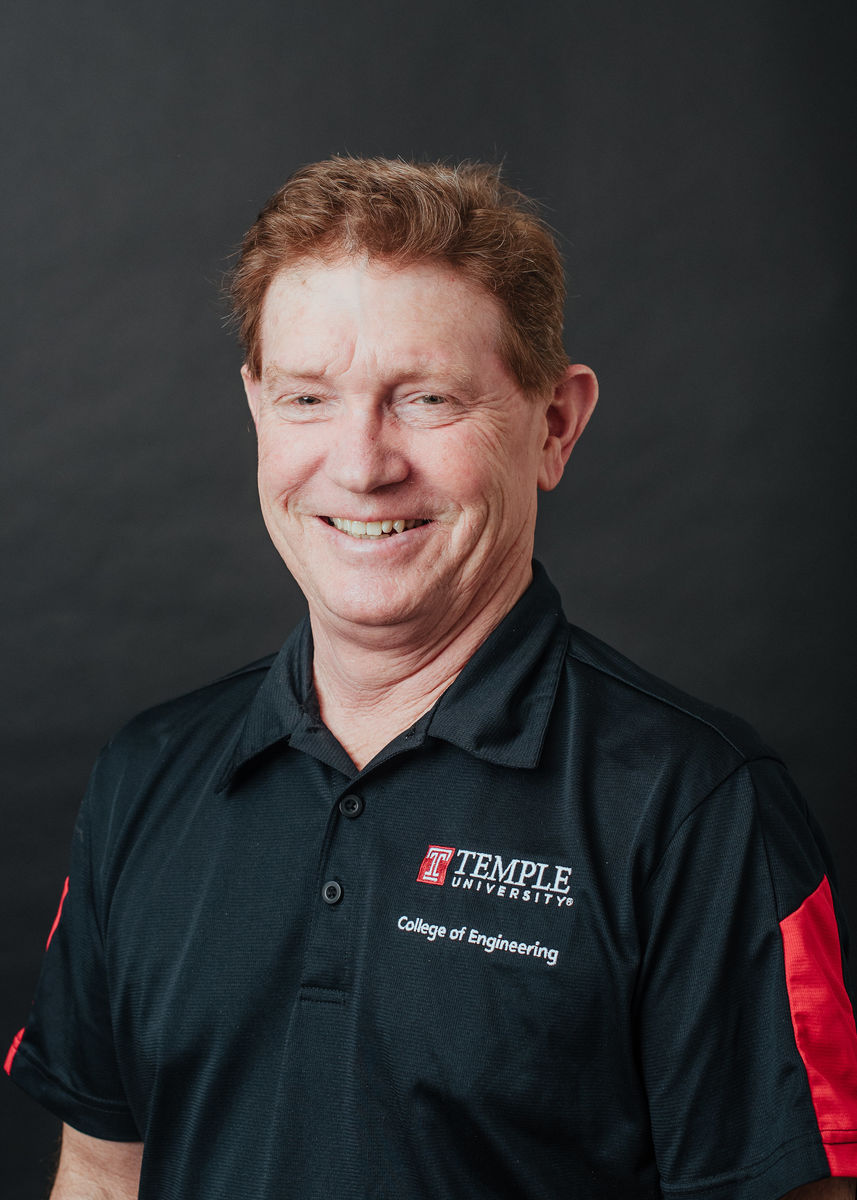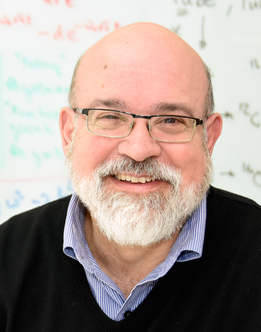An in-depth look at the race to space
Three Temple professors discuss the billionaire space race and the effect it has on space technology, the environment, education and more.

This year, we’ve seen a rivalry between billionaires come to fruition as they forge their way into space. Composed of entrepreneurs like Richard Branson, Jeff Bezos and Elon Musk, the private industry-centric “race to space” involves sending projectiles to the ionosphere, orbital launch rockets and suborbital tourist space flights—changing the way that we think about space altogether.
We talked with three Temple experts to learn more about the impact that the “race to space” has had on space travel, education and technology, as well as the social implications of Branson, Bezos and Musk using their wealth in this way.

John Helferty (Courtesy of the College of Engineering)
John Helferty is an associate professor in the College of Engineering. His research focuses on rocketry and space engineering, including specific interests in remote controlled QuadCopters, near-space payloads, lunar mining robots, high-altitude ballooning, autonomous mobile robots and rotorcraft. He also directs the NASA-funded Student Exploration and Embedded Systems Laboratory at Temple.
With the funding provided by the private industries involved in the billionaire “race to space,” there have been upgrades to space travel technologies that make the trip to space more efficient and cost-effective, he said.
“Let’s start with Richard Bransons’s company, Virgin Galactic—they’ve created a spaceship that is attached to a plane. Once the plane has reached about 60,000 feet, the plane drops the spaceship and then you fire your rockets into space,” said Helferty. “Because of this, the spaceship doesn’t require as much of a boost like you’re seeing with Musk’s SpaceX, Bezos’ Blue Origin and NASA rockets, which require a massive boost just to get off the ground. The propulsion systems for these rockets are still using liquid fuel, but the chemistry that's used for the engine propellants into them has made them much more efficient. Additionally, the advances in materials used to build these rockets and spaceships makes them lighter and arguably stronger, meaning it requires less fuel to propel them into space.”
Once Branson, Bezos and Musk were able to launch into orbit, their businesses varied from one another. “We need to be careful about using the phrase ‘space exploration’ here, because that’s not necessarily what they are all doing. Bezos and Branson (and their corresponding companies) are more so doing what would be considered space travel,” said Helferty. “Space exploration has a connotation that you’re going out and seeking something new and in uncharted territory, like Mars or the polar regions of the moon. Bezos and Branson are more interested in commercial space travel—taking people up for a ride to get a nice view of the curvature of the Earth, experience weightlessness out of the atmosphere and then you’re on your way back. Musk and his company, SpaceX, definitely have plans to go to Mars and explore while also making plans for space travel.”
As expected, commercial space travel will come at no small cost to those who want a seat on one of these space flights. While Blue Origin has yet to release ticket prices, a seat on one of Virgin Galactic’s flights is believed to cost around $450,000—making for a large return on investment once they get them off the ground.

Christina Rosan (Courtesy of the College of Liberal Arts)
Christina Rosan is an associate professor in geography and urban studies focused on sustainable cities. She is also a Faculty Fellow with Temple’s Center for Sustainable Communities and the Loretta C. Duckworth Digital Scholars Studio. She is the co-author of Reimagining Sustainable Cities: Strategies for Designing Greener, Healthier, More Equitable Communities (University of California Press, December 2021).
While some are intrigued by the idea of commercial space travel, others are concerned that the wealth of billionaires is being misused. “Given the state of the world, the need to address climate change, COVID-19, racial justice and inequality, focusing on a ‘race to space’ seems like a misplaced priority,” said Rosan. “Space is becoming a private frontier. It’s like a big yacht. If you have enough money, you can explore space, float around, while the rest of us are dealing with a climate emergency here on Earth. If we have real scientific goals for space exploration, let’s coordinate with governments, business and universities rather than relying on the whims of billionaires.”
Rosan continued to explain how unnecessary space travel can have damaging effects on the environment. “Space tourism has an enormous carbon footprint, so it is not helping to solve the climate problem at all—it’s contributing to it. We are in a climate emergency. How can they use their resources here, on Earth?”
Not only is space travel raising concerns about climate change, but it is also affecting the many employees that work for the other companies of these entrepreneurs, such as Amazon. “I think their employees probably wonder how much of these billionaires’ excess money comes from employee exploitation,” stated Rosan. “The 2020 median employee salary at Amazon was $29,007.”
So, what else can billionaires do to support space exploration? Rosan believes that money can be redirected and used to fuel those who are already involved in space programs and organizations. “Rather than having a handful of billionaires guide our science and technology development, we should tax them appropriately to publicly fund scientific exploration and space programs,” she said.

Jim Napolitano (Courtesy of the College of Science and Technology)
Jim Napolitano is an associate professor in the Department of Physics. His research focuses on parity violation and neutrino oscillations in quantum mechanics.
“When you look at the purpose of the three different billionaires’ space companies, Musk is the only one who is in it for space exploration,” said Napolitano. “SpaceX is technically considered a telecommunications company because they launched their own telecommunications satellite and now their own telecommunications network. That’s pretty impressive when you think about it. However, Bezos and Branson are launching people into space for tourism. Sure, it’s exciting to see celebrities like William Shatner get launched into space now, but it's not the kind of commercial enterprise that is going to excite people in the long run.”
Napolitano touched on the idea that celebrities going into space could motivate or inspire more young people today to get involved in science and technology and eventually go into STEM-related fields. “From an educational standpoint, if it inspires students to go into science and technology, then that's great. We can all use more of that,” he said. “Whether or not the money these guys (Branson, Bezos and Musk) are spending could be better spent on better textbooks for students in schools, paying teachers the kind of salaries they should be paid to teach our kids science and mathematics, and inspire them and give them the time they need to get better at it and learn things in school and through summer programs ... I think they could do more with it.”
However, Napolitano thinks the real way to get kids passionate about space, science and technology is to spark that interest while they’re young.
“STEM is more than just knowing science, engineering and mathematics. It’s about understanding how they affect us and how we can affect them,” explained Napolitano. “But I think if we’re going to make a real difference in STEM education in this country, we have to make teaching STEM to elementary, primary and secondary school students a priority. We have to educate teachers who are able to reach these kids and see this as an honorable, well-paying profession. And it’s really fun when you get in at that age because these kids are not afraid of raising their hands and saying the wrong thing. Second, third grade, maybe even kindergarten, we have to start them early—this is what we need to do to make a difference in STEM.”
—Kierstyn Smith


